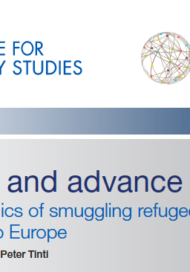On July 25th, U.S. authorities indicted six men for hacking into a dozen American companies. Their criminal endeavours had been wildly successful, reportedly netting 160 million credit cards and $300 million in illicit profits. One of the perpetrators was also charged with hacking into the NASDAQ stock exchange, though there was no indication that any damage was done.
In an era of falling crime rates in developed nations like the U.K., cybercrime (particularly fraud) is one of the few forms of crime that is increasing. While the magnitude of cybercrime is extremely opaque, estimates have placed the cost of cybercrime at “between 0.05% and 1% of national income.” One report, undertaken by the Centre for Strategic and International Studies, found that cybercrime and cyber espionage cost the global economy between $100-$500 billion per year.
The range of threats is also growing, morphing into “advanced persistent threats.” The attack on the NASDAQ exchange is an example of such a threat, dangerous not only due to the possibility of financial theft, but also given the ability of the attacks to disrupt and destabilize key elements of the financial system. Such attacks are becoming more common, as an IOSCO report on cybercrime and the securities market noted, with 53% of securities exchanges noted that they were victimized in the last year.
The virtual nature of attacks, and what is stolen, enable cybercriminals to operate transnationally. All of the six suspects indicted on July 25th were foreign nationals, staging their attacks on U.S. institutions from abroad. In order to assist in addressing this transnational threat, the Global Initiative will work towards establishing a global network of officials tasked with countering cybercrime as well as private sector specialists who have an interest in this.
Ciberdelitos: el incendio descontrolado del mundo híper-conectado
El 25 de julio, las autoridades de los Estados Unidos imputaron a seis hombres por hackear una docena de empresas estadounidenses. Su emprendimiento criminal había sido ampliamente exitoso: habían obtenido 160 millones de tarjetas de crédito y $300 millones de ganancias ilícitas. Uno de los delincuentes también fue condenado por hackear el NASDAQ, la bolsa de valores de los Estados Unidos.
En tiempos en los que los índices de delitos caen países desarrollados, como el Reino Unido, el delito cibernético (particularmente el fraude) es una de las pocas formas de delito que observa un crecimiento. Si bien la magnitud de los ciberdelitos es poco clara, algunas estimaciones han ubicado los costos de estos delitos “entre 0.05% y 1% del producto bruto nacional”. Un informe llevado a cabo por Centre for Strategic & International Studies (Centro para Estudios Estratégicos e Internacionales) reveló que los ciberdelitos y los espionajes cibernéticos le cuestan a la economía global entre 100 y 500 billones de dólares por año.
También se observa un aumento progresivo en la gama de amenazas, mutando hacia “amenazas avanzadas persistentes”. El ataque al NASDAQ es un ejemplo de esta amenaza, peligroso no sólo debido a la posibilidad de robo financiero, sino también por la habilidad de perturbar y desestabilizar elementos cruciales del sistema financiero. Tales ataques son cada vez más comunes, como lo observó un informe de IOSCO sobre ciberdelitos y el mercado de valores – el 53% de las bolsas de valores fueron victimizadas en el último año.
La naturaleza virtual de los ataques y lo que intenta robarse les permite a los delincuentes operar de manera transnacional. Estos seis sujetos imputados el 25 de julio eran extranjeros que montaban sus ataques en instituciones estadounidenses desde el exterior. Con el objetivo de colaborar en el abordaje de esta amenaza transnacional, Global Initiative trabajará para lograr una red global de oficiales que trabajarán para hacerle frente a los ciberdelitos, como también especialistas en el sector privado con interés en la materia.



